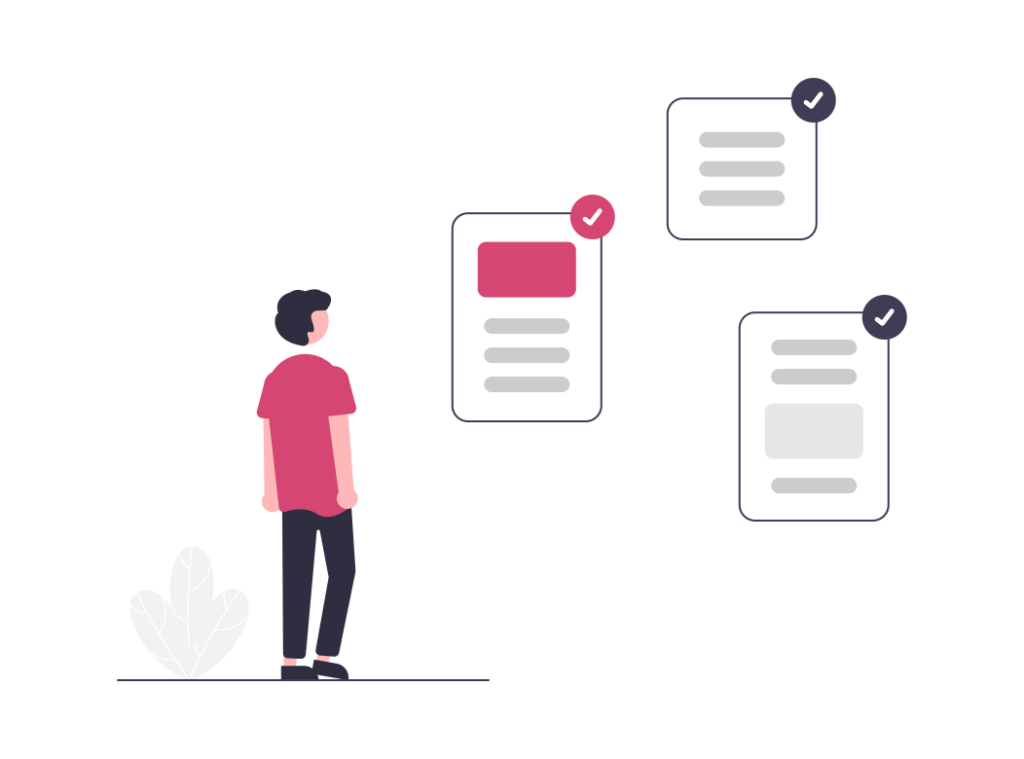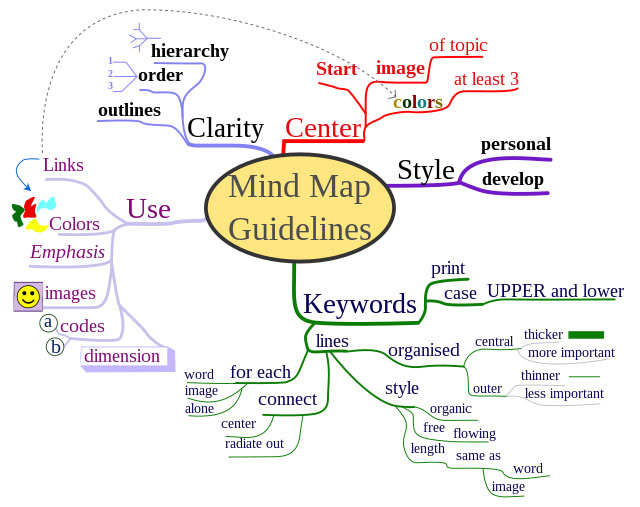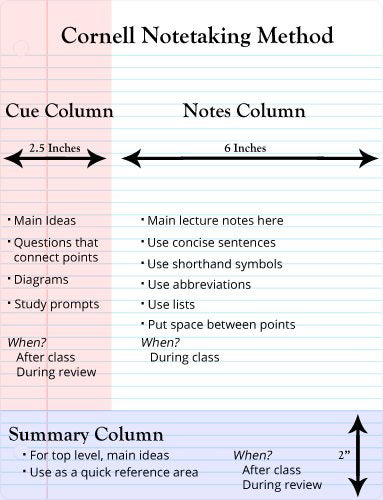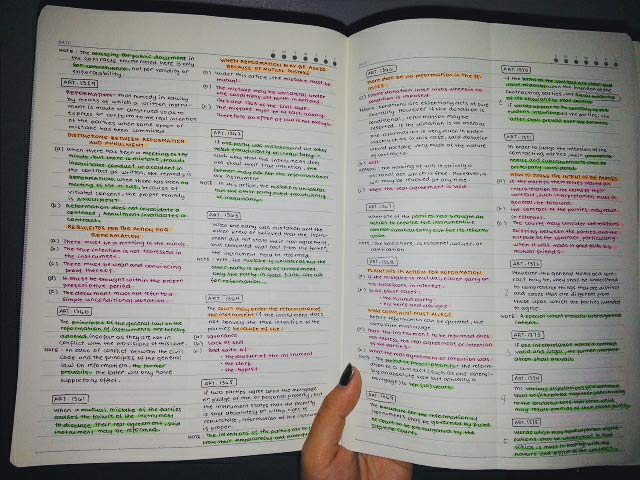A pen, paper and a vacant stare at the board have been part of the student’s inventory for centuries. If you’re anything like what I was in school, you’ll find note-taking can be far from intuitive. I was constantly trying to find an approach that was the most efficient, clear and – as you can imagine – quick.
What Are The Best Note-Taking Methods?
The purpose of note-taking isn’t to write down everything going on in a lesson, but rather to summarise, simplify and/or re-organise the information so that it can be used for recall at a later date. We’ve all seen someone speed-write reams and reams of “notes,” detailed enough to show the teacher’s breathing pattern – you don’t want to become one of those people, right?
So let me show you some effective methods of note-taking that you might want to try.


MEDICINE MASTERY BUNDLE
Are you looking for Guidance for your Medical School Application?
Get full, comprehensive support for your medical school application with 6med’s Medicine Mastery Bundle. Access everything you need for success as soon as you sign up.
UCAT.Ninja
UCAT.Ninja
Are you looking for Guidance for your Medical School Application?
With 6med’s Complete Bundle, you’ll get access to live Crash Courses, in-depth Workbooks, revision platforms, video Masterclasses and more, all covering the complete Medical School application process.
That’s a lot of support so are you ready to get your place in med school?


Mind Maps
I don’t think I can come up with a more popular and sure-fire way to produce good-quality notes. Mind-mapping is an old friend of mine, a loyal companion dating way back to the days of primary school. It’s been there for me through not only organising all those different genetic engineering case studies in Biology A2, but also through analysing Shakespeare in English.

(Image: https://en.wikipedia.org/wiki/Mind_map#/media/File:MindMapGuidlines.svg)
What I love about mind-mapping is that you can do as little or as much with it as you want. Whether it’s going to be a simple, black pen, text-only job or a multi-colour, pictorial extravaganza that would give the best of art students a run for their money, mind-mapping will deliver. And you can very easily keep going back to a mind map to build upon it.
Mind-maps are also great for revision by osmosis. You know, that thing you do where you hang up your notes on your walls hoping that if only you spend enough time around them, you’ll soak up the information? Mind-maps really help with that. Plus, you get some room decoration if you put in enough effort. Any way to reduce stress during exams and applying to university is key.
The Cornell Method
This is one of the more academic methods by which a lot of people serious about studying swear by. I remember teachers going on and on about this method in workshops at school like it was a sacred key to success, but I never actually used it until I entered my first year of university – and boy, do I wish I’d done so sooner.
The sidebar with cues and/or questions is perfect for revision. Out of all the methods I’m going to show you, this one is probably most suited to recall. After some time has passed since taking your notes, you can revisit them, covering the right side of the page and trying to expand on or answer to phrases on the left side.
My only issue with this method is the sometimes not ideal organisation of information. The chronological order of the lesson doesn’t always follow the best logical order of the concept being taught, so looking at the bulk of your notes on the right-hand side of the page can sometimes feel a little disjointed.
However, good use of the summary bar at the bottom and keeping lots of space between separate topics that can be filled in after class will make this better.

(Image: https://www.reddit.com/r/coolguides/comments/3yb07x/cornell_notemaking_method/)
Charts

(Image: https://www.reddit.com/r/coolguides/comments/3yb07x/cornell_notemaking_method/)
While I don’t often use this method, I’ve found I’m most likely to turn to it in times of content-heavy, somewhat convoluted topics. Division of information into columns and rows is a great way to simplify just about any complex subject and break it up into manageable bits that are easier to recall. I’ve also found it’s great for compiling information scattered around the chapter or even the whole book into one
On the flip side, it’s a method quite difficult to just spontaneously get going within a lesson if you’ve got no clue what it’s going to be about – we’ve all been there. Have a skim through the pages of your textbook or handout before you go into your lesson (level: relaxed) or before the teacher begins talking (level: hard) so that you know how to label your columns. This way your charts will be most neat and efficient.
Annotation
Here is the method I personally use most and have done since I started my A-Levels. Looking around at others’ note-taking method tips, I didn’t find annotation mentioned once but I thought I’d include it since, you know, that’s what I’ve been doing for the past years.
It is what it says on the tin. You print out the PowerPoint slides and/or textbook material from your lesson or lecture – many colleges and sixth forms now actually give out packs with these for every module – or you use a digital version on your laptop.
You have the material ready with you in class. You highlight, underline and elaborate on top of the material to fill in any blanks explained by the teacher during the course of the lesson.

(Image: https://www.reddit.com/r/coolguides/comments/3yb07x/cornell_notemaking_method/)
I trust this method because it requires me to actively follow the material, continuously sussing out if anything is missing in the slides. That really engages me. Additionally, it saves me time as I don’t have to write everything down.
While it hasn’t been an issue for me, I realise that note-taking from scratch is a task many find to be good for their study in and of itself, so if you’re one of those people, annotating will probably not be sufficient for you. It can still be a great starting point, however. For instance, it may form the base material for forming a detailed chart.
Drawings
Before you art-phobic, “I can’t draw” types skip over this section, hear me out.
Using nothing but words for hours on end when note-taking can get monotonous. How about using some different brain functions to a) shake things up a bit and b) engage with the material from another angle, further reinforcing it? The drawings don’t have to be conventionally good or insanely elaborate – all that matters is that they make sense to you. You can even make them funny – I know that once I’ve laughed at something, it tends to stick in my mind.
If I can’t persuade you to add a little creative drawing to your notes then at least draw a diagram. That’s the least you can do.
Venn diagrams
How often, as part of your course, do you have to compare two or more things? My answer: too often. Whether it’s comparing dialysis versus a kidney transplant or a continuous process versus a batch process, it’s a common trope in education to learn about things by pointing out their differences. Well, Venn diagrams are made exactly for this.
It’s simple, it’s neat, it’s easy to incorporate into your notes.
Develop your own system
The best of study-ers, those who really have it together, tend to have their own system of colour-coding, symbols and abbreviations that they use in their notes. If you do this yourself or you’ve lent the notes of someone who does, you’ll see how systematic and organisational it is.
I tried doing it in my anatomy textbook by underlining and highlighting the text in different colours: pink for muscles, red for arteries, dark blue for veins, orange for nerves and light blue for clinical and embryological significances. What I found is that it not only separates the dense information into manageable chunks but also makes things easier to find.
The key is to be creative and let yourself figure it out step by step. Once you have your system sussed and you’re used to it, you’ll be producing great quality notes even faster.
Final words
The above methods and techniques are by no means meant to be used by themselves only – mix them up as you see fit. You’ll find that different approaches work for different types of topics.
I used to be reluctant to try to change my revision and note-taking habits once I had committed to one. That’s not a good way to go. Now, whenever I find something new that works better, I just roll with that. Who cares if my work from the end of the year doesn’t match that from the beginning? Studying should be about trying many different ways of doing it and not becoming complacent – that way, you’ll get the most out of it as possible.

MEDICINE MASTERY BUNDLE
Looking for Support with your entire Medical School Application?
With 6med’s Medicine Mastery Bundle, you get access to not just one, but four bundles in one! Get support for your Personal Statement, UCAT and Interview. Basically, every part of your application!
MMI Crash Course
MMI Crash Course
Looking for Support with your entire Medical School Application?
With 6med’s Complete Bundle, you get access to not just one, but four bundles in one! Get support for your Personal Statement, UCAT and Interview. Basically, every part of your application!
If you want access to all of these tools and guarantee your success, then sign up today…

